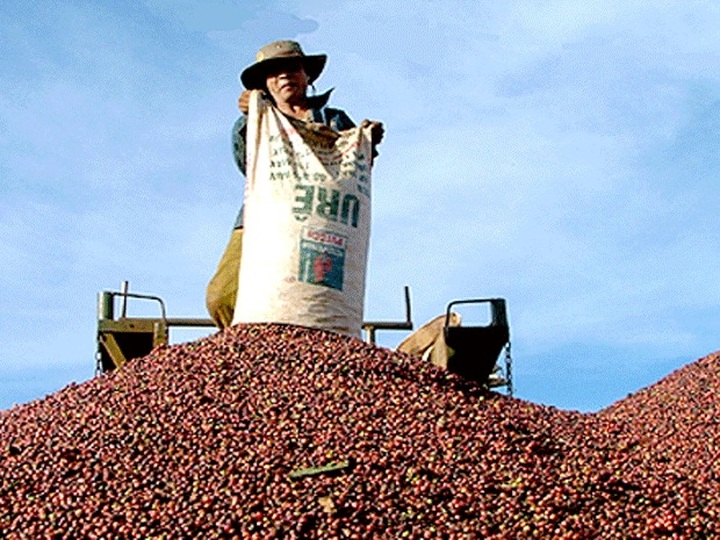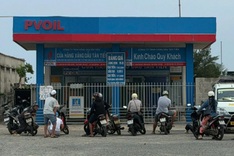
Illustrative photo
Vietnam’s coffee exports are set to reach a record USD 7.5 billion in 2025, after the country met its full-year export target of USD 5.5 billion in the first six months, according to the Ministry of Agriculture and Environment (MAE).
In the first half of the year, Vietnam exported 953,900 tonnes of coffee worth USD 5.45 billion, rising 5.3 per cent in volume and 67.5 per cent in value compared to the same period in 2024. The average export price surged by 59.1 per cent year-on-year, reaching USD 5,708 per tonne.
Germany, Italy and Spain remained the top three buyers, accounting for 16.3, 7.9, and 7.4 per cent of Vietnam’s total coffee exports respectively. Notably, export value to Germany more than doubled in the first five months of 2025, while shipments to Italy and Spain rose by 45.1 and 55.8 per cent respectively.
Among the top 15 export markets, Mexico saw the most significant growth, with export value soaring by over 71 times year-on-year. China recorded the smallest increase, at 22.9 per cent.
Deputy Minister Phung Duc Tien said that with several months remaining, Vietnam could earn an additional USD 2 billion in the second half, pushing total coffee exports to USD 7.5 billion for the year, up 36.9 per cent from 2024.
He noted that most coffee production occurs between December and April, so export volumes in the latter half of the year are expected to decline. “But if we manage USD 2 billion in H2, the USD 7.5 billion target is within reach,” Tien said.
Strong outlook despite global headwinds
Vietnam’s coffee sector continues to perform strongly despite global challenges, including climate volatility and tight supply.
According to the US Department of Agriculture (USDA), global coffee production for the 2024–25 season is forecast at 174.4 million bags, up 2.98 per cent year-on-year. Global consumption is expected to reach only 169.36 million bags, creating a potential surplus of more than 9 million bags.
Major producers are projected to boost output, including Brazil with 65 million bags, Indonesia with 11.25 million (up 2 per cent), and Vietnam with 31 million bags (up 6.9 per cent), to be harvested from October onwards.
Meanwhile, global prices continue to rise. On 9 July, Robusta coffee on the London exchange climbed to USD 3,568 per tonne for September delivery, up USD 42 per tonne. Arabica on the New York exchange rose to 285.60 cents per pound, up 2.6 per cent.
Pursuing high-end markets amid regulatory shifts
Vietnam is increasingly targeting premium markets, particularly the United States, the world’s largest coffee consumer. While Brazil continues to dominate US supply, Vietnam’s Robusta is gaining traction in specialty and value-added segments, including processed and instant coffee.
In Europe, Vietnam’s largest export market, new sustainability regulations are reshaping the trade landscape. Under the European Union’s anti-deforestation regulation (EUDR), Vietnam is classified as a ‘low-risk’ country for forest-risk commodities, meaning its coffee exports are subject to only 1 per cent inspection rates, compared to 3 per cent for medium-risk and 9 per cent for high-risk countries.
Nguyen Do Anh Tuan, Director of MAE’s International Cooperation Department, stressed the importance of full traceability and data transparency for compliance with EUDR standards. He noted that data collection at the local level must be both secure and accessible for enterprise reporting and State oversight.
Deputy Minister Hoang Trung urged agencies to accelerate the transition from pilot to full implementation of the EUDR, ensuring all technical documentation and export data are complete before the regulation takes effect on 1 January 2026.
New growth markets on the horizon
Vietnamese officials see opportunities to expand coffee exports beyond traditional markets. The MAE is encouraging exporters to target Northeast Asia including China, Japan and the Republic of Korea, as well as India, where competitive prices and low logistics costs offer a strategic edge.
Despite ongoing supply chain disruptions and stricter international regulations, Vietnam’s coffee industry is poised to maintain its strong growth trajectory, driven by favourable market conditions, export diversification and rising global demand for robusta-based and value-added coffee products.




















